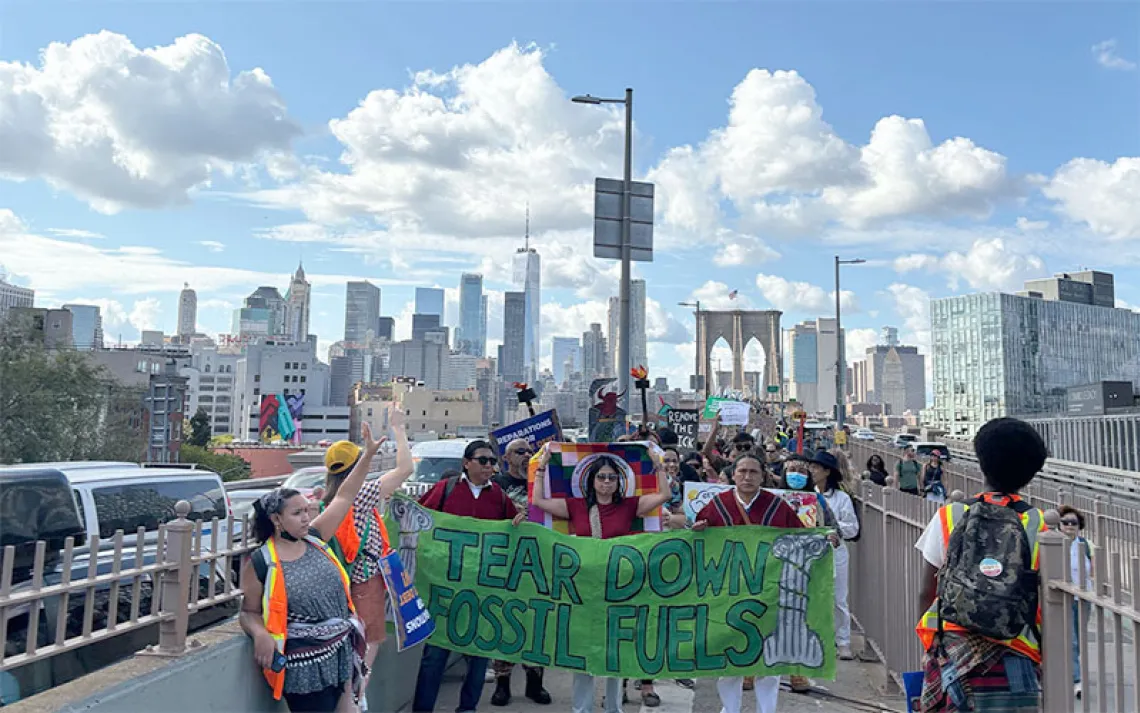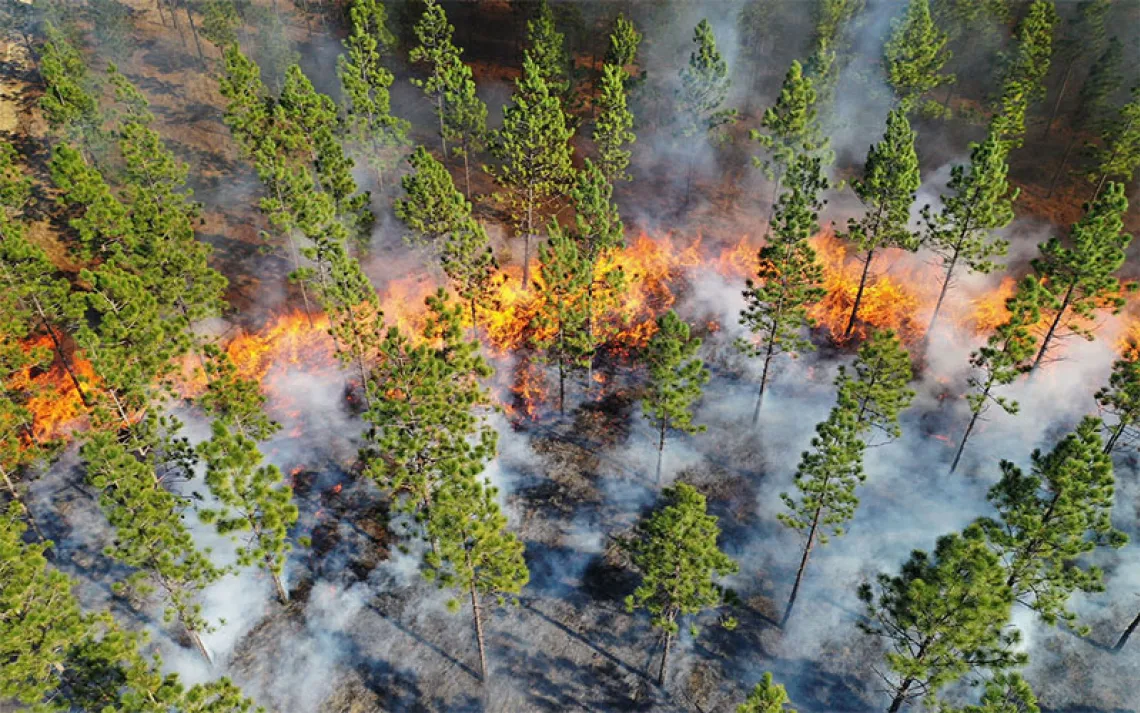Who’s Killing So Many Eco-Activists in Colombia?
Colombia is the world leader for slain land defenders

The Cauca River in Arauca, Colombia. | Photo courtesy of Movimiento Ríos Vivos
Víctor Orlando Mosquera was reported missing by his family on October 10, after he failed to return home in Cali, in southwestern Colombia. The 33-year-old Mosquera was a leading figure with the environmental organization Ciudadanos Orientados (Oriented Citizens)—dedicated to reforestation, planting orchards, and preserving regional wetlands.
Such work often puts activists like Mosquera at odds with large agribusinesses, especially those that see the wetlands as an ideal home for vast acres of sugarcane. Cali is Colombia’s third-largest city and a cultural melting pot known for being both liberal and politically rebellious. Even so, many swamps and marshes have been drained—and most of the low-lying forests cut down—to make way for urban sprawl and huge tracts of monoculture.
“They want to throw us off the lands that we’re working to protect,” Andrés Valencia, a project director with Orientados, said in an interview. “The fight has become very territorial. And the food-industry people know they will be protected, that no one will come after them no matter what they do.” Local politicians “make the problem invisible” and “defend the particular interests” of big agriculture, Valencia said.
Mosquera’s partly decomposed body was found four days after he vanished, buried in a shallow grave near one of the orchards he and his colleagues often tended near the eastern edge of Cali. The coroner ruled that he had suffered several fatal stab wounds.
“He loved what he did,” Valencia said. “He was always willing to put himself at risk for our movement and in the name of resistance.”

Left: Víctor Orlando Mosquera | Photo courtesy of Andrés Valencia, Ciudadanos Orientados
“A perfect storm”
Stories like Mosquera’s are all too common in this Andean nation. Colombia had the distinction of being the world leader in slain environmental activists in 2020 (the latest year for which statistics are available). A recent report by Global Witness tallied at least 65 such killings last year—more than twice the number of the next country on the list.
According to Gimena Sánchez, a Colombia specialist at the Washington Office on Latin America, the appalling number of murders results from a “perfect storm” of factors, including corrupt government officials and a weak judiciary that might occasionally punish the triggermen but does not prosecute the “intellectual authors” of these crimes.
Many of the victims are Indigenous leaders targeted by drug cartels, leftist guerrillas, and right-wing paramilitaries who seek to exert control over ancestral lands for producing and trafficking narcotics, Sánchez said. The vast majority of drugs produced in Colombia flow north and eventually cross the southern border into the United States.
Armed groups in Colombia also work together with extraction industries like “mining, dams, and monoculture crops like sugar or palm,” Sánchez said. “[They] make money off of guarding such projects or facilitating their advancement.” Both corporations and armed actors partner with “local and regional politicians who need the kickbacks or support of the project to stay in power or pay off debts.”
Collectively, the murders have a systemic impact aimed at intimidating activists, as “part of a larger effort to curb opposition,” Sánchez said.
Laura Furones, a researcher at Global Witness who worked on the report about murdered activists around the globe, pointed out that Colombia faces several challenging factors including “endemic, systemic violence, high levels of impunity, and above all resource extraction [being] prioritized over the rights of rural and Indigenous communities.”
Colombia was home to a civil war that lasted more than 50 years, and though the conflict with the Revolutionary Armed Forces of Colombia [FARC] finally ended in 2016, the fallout from that conflict is still being felt.
“The Peace Agreement has been very poorly implemented,” Furones said, and added that there is a significant “state absence” in many areas that are “de facto controlled by guerrillas [and] armed groups. That all contributes to Colombia’s exceptionally high number of [activist] killings.”
According to one much-publicized study, 611 “environmental leaders” were killed between the signing of the peace accord in 2016 and September of this year.

The Ituango Dam on the Cauca River in Arauca, Colombia. When completed the Ituango will be one of the largest dams in Latin America. At least eight activists have been murdered since 2018 for opposing its construction. | Photo courtesy of Movimiento Ríos Vivos
“The Colombian state has stolen away our right to live”
The Institute for Development and Peace Studies (IndePaz) recently reported that there are some 152 environmental conflicts ongoing in Colombia. Most of these conflicts center on “mining, agro-industrial, and infrastructure megaprojects” that are at odds with the well-being of local communities due to the socio-environmental impact of the projects themselves, according to IndePaz.
One such conflict between megaproject and community centers is the Ituango hydroelectric dam on the Cauca River in the mountainous northwestern province of Antioquia. Built by a publicly owned, Medellín-based company called EPM, and financed by transnational corporations based in Spain with Bogotá’s support, the Ituango Dam is scheduled to begin generating electricity in June 2022. When it goes online, it will be one of the largest dams in Latin America, and its construction will have cost, at minimum, $18 billion pesos (US$4.6 million).
But the costs can’t be measured in money alone. At least 13,000 people have already been displaced, and thousands more are at risk, according to a report by the Spanish newspaper Público. Another report has suggested collapse of the dam could imperil up to 130,000 people who live in its shadow.
To push back, fishermen, farmers, and environmental activists created an NGO called the Movimiento de Ríos Vivos (Living Rivers Movement, or MRV) to address the Ituango Dam’s multiple ecological impacts: “floods, landslides, deforestation, pollution, and the massive death of fish.”
At least eight people have been assassinated for their association with MRV in Antioquia since 2018, and there have also been incidents of bombings, torture, false arrests, and death threats against MRV activists who oppose the dam.
MRV member Cármen Hernández owns a humble farm that is bisected by the road EPM built for moving heavy machinery down to the river for the dam.
“There are always so many threats to kill me, to take the farm,” she told Sierra. “Sometimes the men come with their guns and tell me I must give up this land, that it isn’t mine anymore. [They say] if I don’t leave, they’ll burn down the farm with everything, with my children inside and my animals. But I’m not going anywhere.”
Hernández’s husband, Albeiro, was shot to death by an unidentified gunman while participating in a peaceful protest against the dam. “They put the pistol to his head and told him not to move, and then when he froze they shot him anyway,” she said, adding that her nephew was also killed by the same attacker, who then fled the scene on a motorcycle.
Albeiro and Cármen used to supplement the vegetables they grew on the farm with fresh fish caught in the river. But the fish are mostly gone now, she said.
“They already killed El Mono [a local nickname for the Cauca River]. They assassinated El Mono the same way they want to assassinate us and the movement.”
Hernández, a mother of 11, said constant flooding of her cropland from the dammed Cauca has sapped the soil of its nutrients, so that little can be grown here now.
“The Colombian state has stolen away our right to subsist, to live, and now we have nowhere else to go,” she says.
“They kill anyone who is against them.”
Indigenous peoples with close ties to ancestral lands and a dedication to preserving natural resources are frequently targeted in Colombia. That was the case on October 18, when two-time governor of the Nasa people, Alfonso Narváez, was found shot and beheaded in his home in the resource-rich, drug-war-torn southern region known as Cauca.
The former governor and father of two was the 81st Indigenous person to be murdered in Cauca in 2021.
“He was a very good person, a good leader. That is why he was governor twice,” said a Nasa coordinator we’ll call Aida. Aida asked that her own name not be used because “it is not possible to speak of defending the territory without risking death.”
Narváez “was a defender of the entire [Nasa] territory, of water, gold, and natural resources,” Aida said. “That’s why he was assassinated. Because he opposed both the guerrillas and the multinationals who wanted to exploit gold on our land.”
Because there had been other attempts on Narváez's life, Colombia’s National Protection Unit (UPN) had assigned bodyguards to him, yet for some reason he was home alone when neighbors heard gunfire coming from the house.
Aida said she is uncertain who killed the ex-governor. Guerrilla groups like the National Army of Liberation (ELN) and dissident members of the demobilized Revolutionary Armed Forces of Colombia frequently operate illegal wildcat gold mines in Cauca, and Narváez had crossed paths with them before.
But in this case, she suspects gunmen hired by a multinational corporation, because they tend to be more ruthless than the guerrillas and can kill “anyone who is against them.”
Whoever was behind the assassination, they are unlikely to face justice anytime soon.
“Who is being investigated [by the authorities]? Is there even an ongoing investigation? We don’t have any idea because they don’t tell us.”
“The worst figure ever reported.”
Colombia might be the nation that’s been hardest hit, but the troubling trend in assassinations of eco-activists is on the rise worldwide.
Global Witness recorded 227 land and environmental defenders killed in 2020—an average of more than four people a week.
“That’s the worst figure ever recorded,” Global Witness’s Furones said. She also said that 2020 saw a growing range of threats against defenders, including arrests, smear campaigns, criminalization as terrorists, and nonlethal attacks as states used the pandemic to restrict civic space.
Of the 10 countries with the most recorded murders of land activists, seven of them are in Latin America, including Mexico, which was second on the list behind Colombia with 33 killings.
Furones described the region as having “a long history of land conflict” that appears to be heating up. “Increasingly, we are seeing a restriction of [civil rights] and freedoms by repressive governments, which tends to increase violence against defenders,” she said.
The Philippines, Democratic Republic of Congo, and India were also among last year’s hot spots for the killing of such activists.
The global spike in violence “tells us that climate and social justice are interlinked: As the climate crisis continues to spiral out of control, threats against land and environmental defenders are worsening,” Furones said. “There is a clear connection between climate breakdown and violence against people, especially defenders in the Global South.”
In the case of Oriented Citizens’ leader Mosquera, authorities in Cali have so far not named a suspect for his murder, although the city’s police chief informed the local press that an investigation was underway to “clarify the motives” of the incident.
For Mosquera’s colleague Valencia, the motives are already all too clear.
“When you work to protect the land in Colombia,” he said, “there are always enemies on every side.”
 The Magazine of The Sierra Club
The Magazine of The Sierra Club



